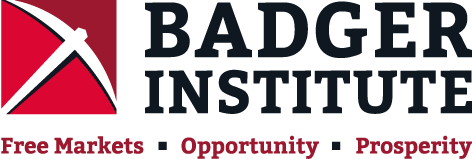- Home
- Issues
- Mandate for Madison
- Research
- News & Analysis
- Media
- Events
- About
- Top Picks
- Donate
- Contact Us
Subscribe to Top Picks
Get the latest news and research from Badger Institute
- Federal prosecutors in Madison have stopped prosecuting cannabis offenses
- Derail the Hop permanently
- Wisconsin cities can grow if they let housing markets work, say scholars
- Half of Wisconsin state employees may be working from home — though no one has a complete count
- Troubled Milwaukee streetcar remains 30% under pre-pandemic peak despite new tracks
- AEI: Building more homes in Wisconsin would drive down cost
- Kinser DPI victory would alter decades-long trend
- Where Wisconsin’s crazy meth infestation appears most prevalent
Browsing: School Choice
If Brittany Kinser wins Wisconsin’s race for state school superintendent, it would be the first victory over union-backed candidates since 1981.
The number of students enrolled in private school in Wisconsin via choice programs increased by about 3,800 in 2024.
Enrollment headcounts of children receiving a publicly funded education in Wisconsin this school year continued the trends of the past 20 years.
The winner of Wisconsin’s race for school superintendent will have far-reaching powers to advance changes and improvements in education.
If you’re puzzled why progressive commentators seem so threatened by a school choice program with one-sixteenth of the state’s pupils, with 2% of Madison’s kids, and with a taxpayer outlay per child that’s only 60% of what Madison’s government-run system spends to get its certifiably worse results, perhaps our answer lies in the upcoming referendum ask…
DeAngelis spoke with the Badger Institute’s policy director, Patrick McIlheran, about the ideas in his book and about the future of school choice both in Wisconsin and nationwide.
The news of a $100 million investment in a new school on metro Milwaukee’s north side by St. Augustine Preparatory Academy, a school participating in Wisconsin’s pioneering school choice program, puts a number on a development predicted last summer.
A new bill in Madison could, if enacted, result in substantial property tax cuts in many school districts. It would also result in significantly higher state aid for many traditional public school districts where large numbers of children choose to attend independent charter schools or private schools in one of Wisconsin’s parental choice programs.
To bring about change, parents need to know what a school is teaching. They also need the leverage to object. School choice is not the only tool, but it is a necessary first tool, because parents’ power to change schools comes from their power to leave schools for better ones.
Over 70,000 Wisconsin students could be impacted If successful, a lawsuit claiming Wisconsin’s private-school parental choice program and public independent…
In the lawsuit bankrolled by the Minocqua beer marketer, Kirk Bangstad, who’s trying to kill school choice in Wisconsin, his lawyers make an icy admission: They know it will “impact tens of thousands of children” to throw them out of their schools. They’re asking the state Supreme Court to hurt those kids anyway.
More than 5,000 students with disabilities participate in one of four Wisconsin school choice programs. In 2022 alone, more than 150 schools in the state’s choice programs accepted 2,217 students with special needs scholarships.
Since 2009, Wisconsin district school enrollment is down 8.3%, or 72,032 students. Independent charter school enrollment is up 81%, or 5,185 students. Choice school enrollment is up 163%, or 34,021 students.
Parents have changed America’s mind on education, parents who correctly see their children’s futures as more important than some abstract idea about there being one proper shape for schooling.
Wisconsin’s Forward Exam, used since 2015-16, tests all students in grades 3 through 8 on reading and math every year, though the 2019-20 school year was skipped.
Students’ performance is ranked as “advanced,” “proficient,” “basic” or “below basic.”
Wisconsin’s independent choice and public charter schools have drawn about 70,000 children, two-thirds of them non-white, and the programs are old enough to have piled up an undeniable record of better outcomes. Why do so many speakers in the DPI’s equity series oppose this?
Now that choice and independent charter schools are going to be less disadvantaged compared to district schools and to the prevailing cost of educating a kid, donors’ investments can go toward expanding capacity.
Wisconsinites clearly got some wins in the 2023-2025 biennel budget. Now the task at hand is consolidate and expand those moving forward.
Seeing how often Wisconsinites have been told that public school districts are starving, it isn’t surprising that when asked to guess how much tax money districts spent per student, they whiffed. And not by a little. The most common guess was about one-third to one-half of what the Department of Public Instruction says is the real figure.
Badger Institute education consultant Jim Bender, testifying in favor of Assembly Bill 305, answers a question on choice and charter school accountability measures from Representative Kristina Shelton (D-Green Bay).




